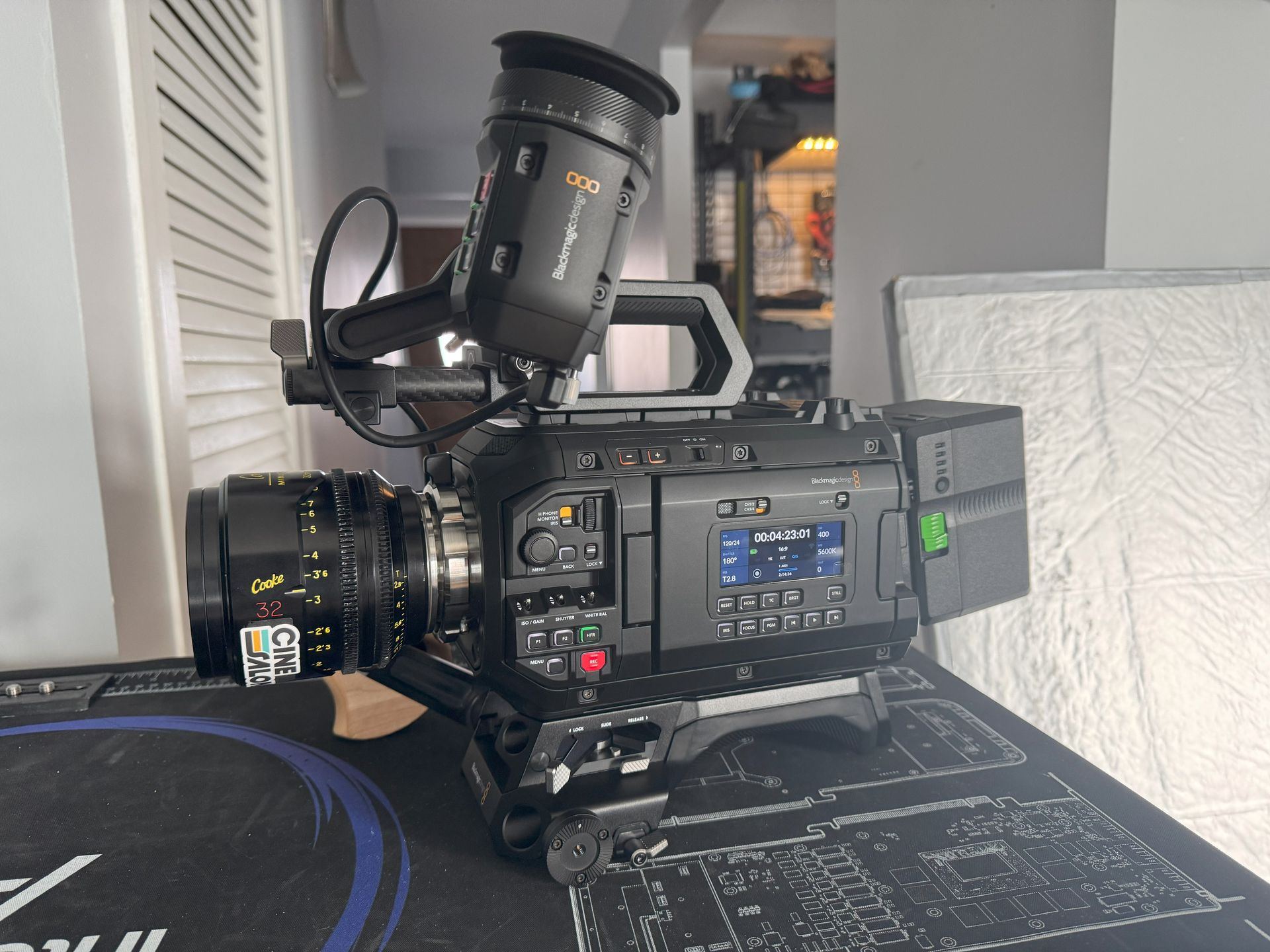
Companies advertise their products or services through videos online. Digital video advertisements have become more popular and essential for reaching customers. This blog will discuss various types of video digital video advertisements, their benefits, how to make and place them, measuring their effectiveness, and the future of video advertising. This enables us to understand how businesses use videos to capture people’s attention towards their products on sale.

Evolutionary Steps in Digital Video Advertising over Time
Video advertising has undergone significant change with time. Let us see how it has evolved:
1. Early Days of TV Commercials
Initially, TV commercials were the main form of video advertising, and companies developed short adverts for program breaks (Carroll et al. 10). They were a means to draw interest and promote goods.
2. Rise of Online Video Platforms
The internet has opened up new possibilities, such as online video platforms like YouTube. Companies started making videos specifically for online audiences as they were not just restricted to domestic television screens.
3. Mobile Video Advertising
With increased smartphone usage came mobile video advertising. Businesses began creating digital video advertisements that could be viewed on mobile devices by optimizing them for these purposes so that they can reach out to people even when on the move.
4. Personalized and Interactive Digital video advertisements
Today’s online video advertisements can incorporate personalization based on individual preferences and actions made on the internet; in contrast, interactive digital video advertisements allow viewers to participate in the ad, becoming more engaging and memorable.
5. Integration with Social Media
Video advertising is now integrated into video platforms like Instagram, Facebook, and TikTok, among others. Thus, today, companies create short, fun clips that fit seamlessly into users’ feeds, thereby interacting with a broader audience than before.
6. Virtual Reality and Augmented Reality Digital video advertisements
The future may bring virtual reality(VR) and augmented reality(AR) commercials within it where users would gain access into another world due to those technologies making advertising experiences more engaging and influential.
Types of Digital Video Advertising
Various forms of video digital video advertisements target audiences from different angles. Some of them include:
1. Commercials
Commercials are designed as short videos that ensnare attention quickly. They are usually aired during commercial breaks on TV or before content is displayed online. Companies make use of these commercials to announce new products and attract customers.
2. Social Content Videos
Social content videos are short, engaging clips created for video social media platforms like Instagram, Facebook, and TikTok. They aim to be shared widely by users on platforms to catch eyes and gather likes.
3. Instream Video Digital video advertisements
Instream digital video advertisements resemble traditional TV commercials but appear within existing video content like those viewed on YouTube or online streaming services. They may be skippable or non-skippable and help brands communicate with an audience who has already shown interest in such videos.
4. Interstitial Video Digital video advertisements
Interstitial video digital video advertisements are popup digital video advertisements that appear between different content on websites or apps. These typically can be skipped after a few seconds so that users can continue browsing or using their app while trying not to be too intrusive when grabbing people’s attention.
5. Native Advertising
This is to say that native advertising is designed in such a way as to blend seamlessly with the platform it is displayed on, making it look like a natural part of the environment people regularly see. This means they can easily fit into the content around them and not distract users browsing web pages or social media sites.
6. Sponsored Content
Another term for this is sponsored content, when companies pay for media content from another brand or influencer. For instance, YouTube platforms have many digital video advertisements where firms negotiate with commercial video producers to advertise their goods/services through videos.

Influencer Marketing
Alternatively referred to as influencer marketing, brands hire famous people and professional advertising videographers from different viral platforms, such as Facebook and Twitter, who can create these promotional materials. Therefore, there are loyal fans who see their endorsements as genuine ones, and thus, this helps marketers use them as valuable sources of reaching specific demographics.
Knowing different types of video digital video advertisements will enable firms to select the correct format to effectively reach their target audience while engaging viewers in a manner they can identify with.
Benefits of Digital Video Advertising in Marketing Strategies:
Using video digital video advertisements in marketing strategies has many benefits. Let’s go through some of them:
1. Increased Engagement
Video digital video advertisements are more engaging than text or image digital video advertisements as they can incite emotions, tell stories, and present products more interestingly, resulting in higher engagement rates and better brand recall.
2. Better Targeting
Audiences can be narrowed down by criteria like demographics, interests, behaviors, etc., thus enabling targeting based on specific requirements. In other words, this provides an opportunity to get people who need your product and reduce waste coverage.
3. Increased Brand Awareness
One could use video digital advertisements with a broader appeal to increase brand awareness. These can be shared on different platforms, making them likely to be seen by potential customers.
4. Improved Customer Trust
High-quality video digital video advertisements build trust by transparently providing valuable product information. Such interactions foster stronger relationship ties, leading to increased customer loyalty.
5. Measurable Results
It is possible to track and measure video digital video advertisements, enabling companies to evaluate their effectiveness and make decisions based on facts. This enhances marketing strategies, leading to improved ROI.
6. Adaptability
Video digital video advertisements can easily be customized for different platforms and devices, ensuring they are versatile across channels. For each platform, videos can be created per the requirements, thus creating more impact.
7. Storytelling
These adverts may also tell a story about a brand or product. Therefore, this will create an emotional connection with viewers, making the brand or product memorable and attractive.
8. Educational Value
Video digital video advertisements can have educational content that teaches people about the product/service and why it is beneficial in their lives. It is like giving customers information on what they need to know before purchasing it.
Therefore, by understanding the benefits of digital video advertising in marketing strategies, businesses can develop successful campaigns that will reach out directly to their target market, build trust among them, and increase sales volume at the same time.

Best Practices for Digital Video Advertising Campaigns
To perfect your digital video advertising campaign, follow these tips:
1. Define Clear Objectives
Before running any campaign, clearly define its objectives, such as awareness raising for brands, sales generation, or lead creation, so everything associated with it aligns with this.
2. Know Your Audience
Brands should know who they’re targeting, including the preferences they require. Customers can be influenced more when entertained by some things rather than others.
3. Create Engaging Content
Ensure your video digital video advertisements are viewed by placing them on the right platform.
Consider which platforms to put your digital video advertisements on based on your target audience and campaign goals. Popular platforms, such as YouTube, Facebook, Instagram, TikTok, and many other websites, provide advertising spaces.
2. Ad Formats and Sizes
Different platforms require different formats and sizes for digital video advertising services. Avert issues with playback or display by ensuring your video ad meets platform specifications such as resolution, aspect ratio, file size, and length.
3. Video Hosting
Decide whether you’ll host the video ad on the advertising platform directly or use a third-party hosting service. With some platforms, you get hosting options, while with others, you have to upload your video to separate hosting services before linking it to your ad.
4. Targeting Options
To achieve better results in reaching specific audiences, find out how targeting options can be used on this platform. Some targeting options include demographics, interests, behaviors, location, etc., letting advertisers specify the delivery of their digital video advertisements to particular groups of users.
5. Budgeting and Bidding
Determine budgeting and bidding based on campaign objectives and the platform's advertising model. Know how bidding works in every platform so that you can optimize your ad placements for budget efficiency maximization.
6. Tracking and Analytics
Implement tracking pixels or tags provided by the platform to monitor the performance of your video digital video advertisements through tracking metrics like views, clicks, conversion rates, and engagement rates for campaign evaluation purposes, leading to data-driven optimization decisions.
7. Compliance And Policies
Ensure compliance with policies and guidelines; otherwise, these may lead to rejection or suspension. Formulate strategies to familiarize yourself with content limitations, targeting practices, or restrictions associated with any ad format employed for a positive user experience when going through this procedure.
By understanding these aspects of placing digital video advertising and adhering to technical specifications, you can effectively launch campaigns that reach the right audience, drive engagement, and achieve your marketing objectives.

How to businesses can identify their target audience for video advertising campaigns
Successfully achieving marketing objectives requires reaching out to the right people, which can only be achieved if you establish a target audience for video advertising campaigns. There are several processes that any firm can follow to determine whom they are targeting:
1. Customer Data Analysis
Analyzing information regarding your clients, such as age, gender, hobbies, interests, behavior, etc., will help you determine who has similar tastes and preferences. This way, it would be easier to identify those potential customers interested in your products.
2. Market Research
It also entails market research that gives insights into your target audience’s needs, preferences, pain points, etc., so your video digital video advertisements match their needs.
3. Analytics Tools
The analytics tools provided by an advertising platform allow one to know the data concerning the demographics and behavior of those who have interacted with the content posted online or through other types of online advertising before doing so. In this case, these tools may give you a better understanding of the behavioral patterns of some specific users than others.
4. Competitor Strategy Analysis
Studying how rivals pursue clients may reveal who they think is their target consumer, making it easier for them to distinguish themselves from other players in the industry.
5. Creating customer personas
This implies the development of different representations of consumer profiles based on attributes such as age groups, sex roles, income levels, job categories, and type of activities carried out by each segment, among many other demographic factors making up individual identity profiles representing particular market segments, which firms usually obtain their best customers. That means this persona would reduce wasteful media spending money.
6. Testing and Refining
We can find out which performs well under similar conditions using digital video advertisement that reaches different viewership base sections. Thus, the results from the analytics will significantly affect performance measurement and ultimately refine targeting strategies.
7. Adjusting and Adapting
Adjust it as you learn from prior video ad campaigns. In addition, this is done so it can meet new customers who are always in need of them.
How to Measure the Success of Video Advertising Campaigns
To evaluate the efficiency of video digital video advertisements, goals should be set first, and then relevant metrics should be determined:
1. Set Your Targets
Thus, before one embarks on any marketing strategy, one should set clear objectives for their video advertising campaign, such as improving brand awareness or driving customer traffic to our website.
2. Key Metrics Identification
These indicators show whether a campaign was well planned; views, CTRs (click-through rates), conversion rate, engagement rate, and view period ROI are standard metrics that indicate the performance of video adverts.
3. Other Secondary Metrics
Furthermore, there are other secondary statistics to consider, which give a piece of more detailed information about how the targeted audience of the ad reacted to it and the campaign itself: social shares (likes), comments left behind by people who viewed this type of ad (could be negative ones too), completion rates meaning potential viewers didn’t skip any part of advertisement while watching it through etc., bounce rates refers percentage individuals coming back second time once they have clicked onto home page from internet search engine/another website visited previously.
4. Set Benchmarks
Industry standards, competitor analysis, or past performance can form the basis for these benchmarks, allowing us to measure progress against them, identify areas for improvement, and determine whether current efforts work towards achieving set goals. From these steps, you can know if your efforts are efficient.
5. Track Performance Continuously
Throughout your digital video advertisement campaign, it is necessary to continuously monitor its performance and make real-time adjustments to optimize it. This means you must monitor the statistics generated from these campaigns and adjust where necessary.
6. Analyze Results
The data collected during this campaign needs to be analyzed to evaluate how practical our activities had been in achieving their desired goals. Therefore, identifying patterns and trends and strengths and weaknesses observed throughout such analysis would inform future campaigns, resulting in better overall performance.
From here, make informed decisions based on analyzing results so that you can adjust your strategies accordingly. This might involve tweaking targeting parameters, refining ad creative, reallocating budget towards high-performing tactics, or testing new approaches to enhance campaign effectiveness.

Understanding Video Analytics and Measuring Success
This means interpreting data and insights about the performance of your video digital video advertisements:
1. Understand Key Metrics
Knowing views referred to as call-to-action(CTA) is essential since this is how you will measure the success of your campaign. Other vital metrics for video advertising campaigns include click-through rates (CTR), conversion, engagement rates, watch time, and return on investment (ROI).
2. Analyze Data
Use the tools provided by these platforms for advertising to analyze data from your video advertising campaigns. This enables a closer look at the audience’s behavior.
3. Identify Trends and Patterns
What are some more trends that you might recognize in the data? For example, which demographics engage more with an ad? Similarly, which platforms give the best returns?
4. Compare Performance Across Platforms
One can determine how well their target market was reached by comparing videos across different advertising platforms. As such, they can allocate resources more wisely and optimize their advertising strategy.
5. Optimize Campaigns
Acting on this information may require reevaluating targeting criteria, fine-tuning adverts, and reallocating money into successful tactics or experiments to boost campaigns’ success percentages.
6. Monitor Performance Over Time
Monitor changes in public sentiment towards such videos or any alterations in results over time so that adaptation can occur while there is still enough lead time to ensure continued success in this area.
7. Evaluate ROI
Evaluate the value of your investments by billing them against their returns on marketing video outreaches, ultimately determining their efficacy in subsequent related efforts.
How to Produce a Successful Video Advertisement
For instance, the video must have explicit instructions (CTAs) that should cause one to take action, such as visiting the website and buying or subscribing to newsletters.
Test and Iterate
After that, you can test different versions of your video digital video advertisements and compare their performance using analytics data, on which you can base your decisions on improving the campaign.
Monitor & Adjust
Thus, marketers can track their campaigns' efficacy and make necessary adjustments. This process may involve refining targeting, creativity, or budgeting to get better results.
So businesses can watch how their campaigns perform in reality and make suitable changes when needed simply because they want their digital video advertisements targeted sufficiently with accuracy, giving creative adverts or having budgets adjusted, thereby realizing better outcomes out of these measures.
Measure Success
Set metrics for gauging campaign success and employ analytics to evaluate performance accordingly. In this regard, it could be possible to determine whether a particular campaign achieved its objectives.
For example, a video needs CTAs that are explicit instructions to elicit action from people, such as going to the website and either buying or subscribing to newsletters.
Video Ad Sequencing
This is where businesses show a series of videos to viewers in a particular order to tell a story or guide them through the customer journey.
Shoppable Video Digital video advertisements
These enable customers to make purchases from within the video ad itself rather than having to leave the page where it is being shown, which can increase sales conversion rates since consumers are more likely to buy something if they do not have to leave the website first before making a purchase, e.g., shopping mall’s website selling clothes directly displayed on YouTube.
Video Advertising on Connected TVs (CTVs)
Video advertising on CTVs is increasingly popular as streaming services and intelligent Televisions continue rising, meaning businesses can reach more audiences and create better digital video advertisements.
By keeping up to date with these future trends and developments in video advertising, brands can outdo competitors while creating highly effective and engaging video digital video advertisements.
Final Words on Digital Video Advertising:
Digital video advertising is dynamic due to continuous changes (although it also offers several possibilities for an advertiser targeting its audience) that allow businesses to attain their marketing goals.
A company should differentiate between types of video commercials by assessing the disparities among different video commercials and how they are made to effectively place them for each digital video advertisement, whether it is progressive over time or not.
This competition allows the industry to exploit customers’ best interests since there exist technological aspects like Interactive Digital video advertisements, Artificial Intelligence (AI), Virtual Reality/Augmented Reality (VR/AR), and Programmatic Buying, which companies can use. Suppose new technologies like those available nowadays are employed for making videos.
In that case, the rapidly changing digital environment will not kill such advertisements but enable them to stand and survive for long periods. Talk to us if you need further clarification or consultation on video production.

Get total clarity on your video marketing and paid media with our FREE comprehensive data audit.







